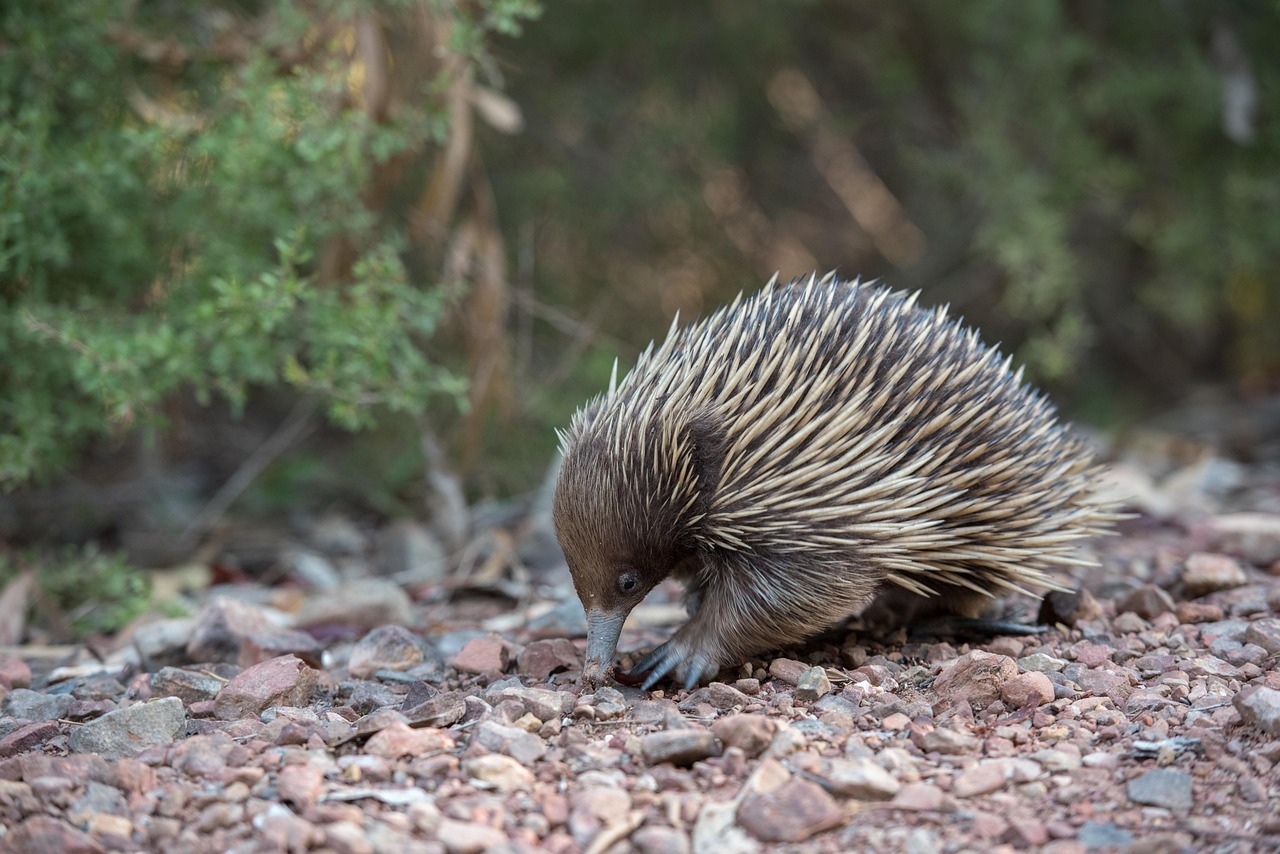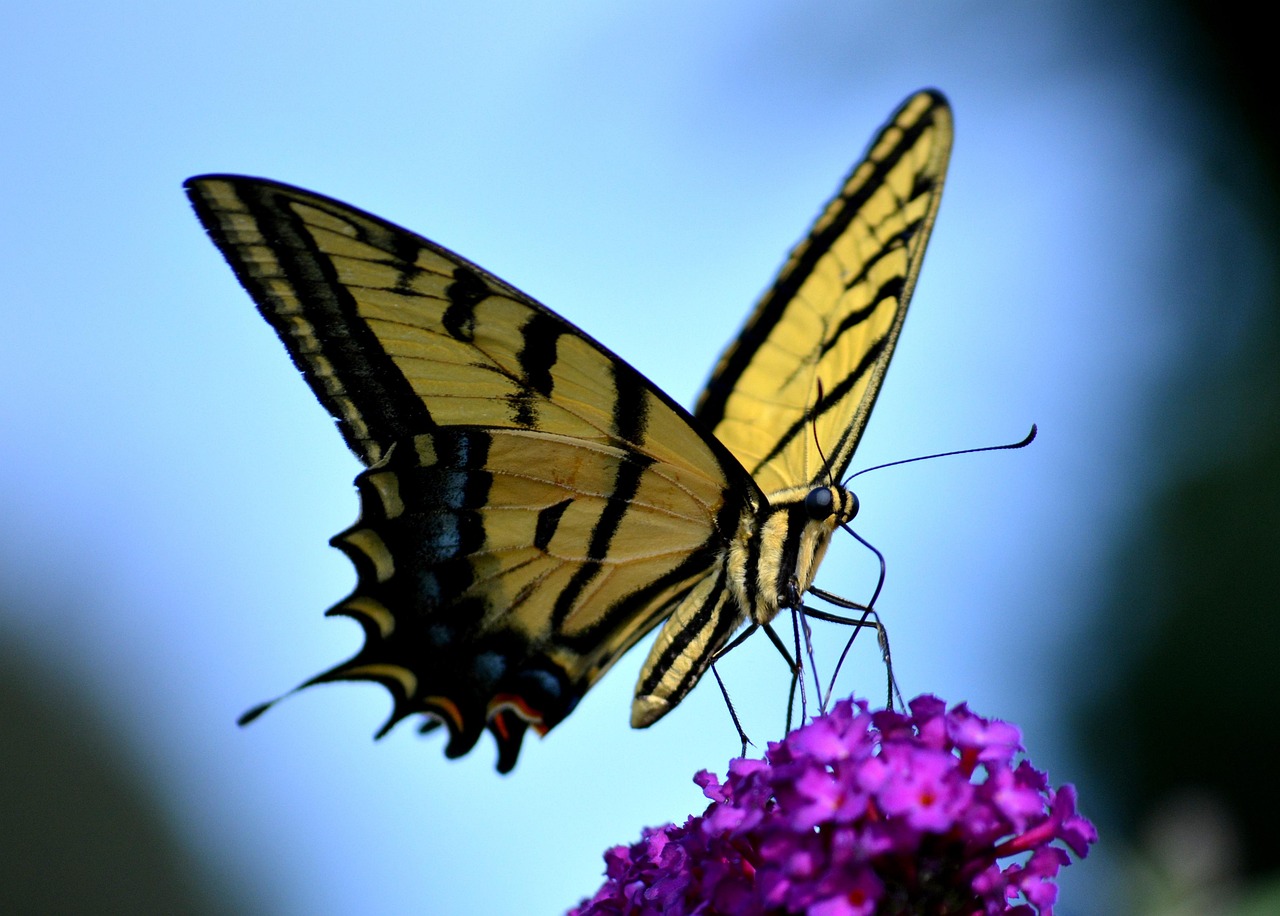Tiger Swallowtail butterflies lay their eggs on specific host plants, primarily including species of the genus Magnolia, Prunus, and Liquidambar. These plants provide essential nutrients for the caterpillars, which develop through several instars before pupating. Their breeding habits vary by region, often aligning with seasonal changes and plant availability.
Tiger Swallowtail Butterflies: An Overview

The Tiger Swallowtail butterfly, known scientifically as Papilio machaon, is one of the most recognizable butterflies in North America. With its striking yellow and black coloration, this butterfly can be seen fluttering around gardens, fields, and forests. Its beauty, however, is not just for show; the lifecycle of the Tiger Swallowtail is intricately tied to specific plants that serve as host for its eggs and larvae.
Understanding the breeding habits of the Tiger Swallowtail is critical for conservation efforts. These butterflies are known to have distinct preferences when it comes to laying their eggs. The choice of host plants significantly impacts the survival rate of their offspring. The eggs are usually laid on the underside of leaves, providing camouflage from predators.
Host Plants of Tiger Swallowtail Butterflies
The selection of host plants is vital for the development of Tiger Swallowtail caterpillars. Each plant species offers different nutrients that caterpillars require during their growth. Below is a list of primary host plants commonly associated with Tiger Swallowtails:
- Magnolia: Trees in this genus provide a nutritious environment for the caterpillars.
- Cherry (Prunus): Species like sweet cherry and black cherry are favored for egg-laying.
- Sassafras (Sassafras albidum): This plant is another preferred host for the larvae.
- Sweetbay Magnolia (Magnolia virginiana): A suitable aquatic plant that supports caterpillar development.
- Black Gum (Nyssa sylvatica): Provides a rich food source for the young caterpillars.
Breeding Behavior and Lifespan
The breeding behavior of the Tiger Swallowtail butterfly varies with environmental conditions. Mating typically occurs in spring and summer when temperatures are warm and flowers are abundant. Males often establish territories and engage in aerial displays to attract females.
The female Tiger Swallowtail usually lays between 30 to 100 eggs at a time. After about a week, the eggs hatch into small caterpillars. The caterpillars undergo several molting stages before they become pupa. The entire process from egg to adult can take several weeks, depending on temperature and availability of food sources.
Caterpillar Development Stages
The caterpillars of the Tiger Swallowtail exhibit fascinating transformations as they grow. They typically go through five instar stages before pupation. Each stage is marked by distinct physical changes, which help them adapt and survive in their environment. Here are some key characteristics:
| Instar Stage | Description |
|---|---|
| 1st Instar | Small and vulnerable with minimal camouflage. |
| 2nd Instar | Begins developing more distinct colors and patterns. |
| 3rd Instar | Grows larger; starts to mimic bird droppings for protection. |
| 4th Instar | More pronounced markings; actively feeds on host plant leaves. |
| 5th Instar | Final growth stage before pupation; prepares for metamorphosis. |
The adaptability of the Tiger Swallowtail to various environments helps ensure its survival. Understanding their breeding habits and host plant preferences allows conservationists to create better habitats for these beautiful butterflies. As urbanization continues to spread, preserving natural areas rich in suitable host plants is essential for maintaining their populations.
Environmental Factors Influencing Breeding
The breeding habits of the Tiger Swallowtail are significantly influenced by environmental factors. These factors not only affect the butterflies’ reproductive cycles but also the availability of host plants. Understanding these influences can help in creating better conservation strategies.
Temperature and Climate
Temperature plays a critical role in the lifecycle of the Tiger Swallowtail. Warmer temperatures typically lead to earlier emergence from pupae in the spring. This can result in multiple generations within a single season. Conversely, cooler climates may prolong the developmental stages and limit the number of generations produced.
In regions with distinct seasons, such as North America, Tiger Swallowtails may enter diapause—a period of dormancy—during colder months. This ensures that they survive until favorable conditions return. The following factors are noteworthy:
- Spring Emergence: Higher temperatures can trigger earlier mating behaviors.
- Summer Lifespan: Ideal conditions can lead to increased lifespan and reproduction rates.
- Winter Survival: Adaptations for survival during colder months are crucial for population sustainability.
Habitat Preferences
The habitat preferences of the Tiger Swallowtail also dictate their breeding success. These butterflies thrive in diverse environments, from open fields to wooded areas. They are often found near water sources, which provide additional nourishment through various flowering plants.
Key habitat characteristics include:
- Diversity of Flora: A mix of nectar-producing flowers and suitable host plants enhances breeding opportunities.
- Moisture Levels: Areas with adequate moisture support lush plant growth, providing food for both adult butterflies and larvae.
- Sunlight Exposure: Sunny spots are essential for thermoregulation, allowing butterflies to warm up before flying.
Behavioral Adaptations During Breeding
Tiger Swallowtails exhibit various behavioral adaptations that enhance their chances of successful reproduction. These behaviors are essential for both attracting mates and protecting their eggs from predators.
Mating Rituals
Mating rituals among Tiger Swallowtails are elaborate and often involve aerial displays. Males typically establish territories where they can attract females through flight patterns and pheromones. Key aspects of their mating behavior include:
- Territorial Displays: Males will chase away other males to defend their territory.
- Pheromone Release: Females release chemical signals to attract males during their fertile periods.
- Courtship Flights: Males engage in intricate flight patterns to entice females.
Egg Laying Behavior
The egg-laying process is meticulous. Females carefully select host plants based on several criteria, ensuring that the chosen plants are healthy and abundant. The following behaviors are typical during egg-laying:
- Site Inspection: Females may circle around potential host plants to assess their suitability.
- Leaf Selection: Eggs are typically laid on the underside of leaves to conceal them from predators.
- Group Laying: In some cases, females may lay eggs in clusters to increase the chances of survival through sheer numbers.
Pest and Predator Interactions
The survival of Tiger Swallowtail eggs and caterpillars is often threatened by various predators and pests. Understanding these interactions is vital for conservation efforts aimed at protecting these butterflies.
Common threats include:
- Birds: Many bird species prey on caterpillars, especially during their early instars when they are most vulnerable.
- Insects: Some insects, like parasitic wasps, target caterpillars, laying their eggs inside them.
- Environmental Hazards: Pesticides and habitat destruction can lead to significant declines in caterpillar populations.
The adaptation strategies employed by Tiger Swallowtails include camouflage and mimicry, which help reduce predation risk during vulnerable life stages. By understanding these interactions and threats, conservationists can develop better strategies to protect this iconic butterfly species.

Conservation Efforts for Tiger Swallowtails
As the population of Tiger Swallowtail butterflies faces various threats, conservation efforts have become increasingly important. These efforts aim to protect both the butterflies and their habitats. Understanding the significance of host plants and breeding practices can guide effective conservation strategies.
Habitat Restoration
One of the most effective ways to support Tiger Swallowtail populations is through habitat restoration. This involves re-establishing native plant communities that serve as host plants and nectar sources for adult butterflies. Key steps in habitat restoration include:
- Identifying Native Flora: Restoration projects begin with identifying native plant species that are essential for the lifecycle of Tiger Swallowtails.
- Removing Invasive Species: Invasive plants can outcompete native host plants, making it crucial to manage or remove them from restoration sites.
- Creating Pollinator Gardens: Planting a variety of nectar-rich flowers can enhance local biodiversity and support adult butterflies.
Community Involvement
Engaging local communities in conservation efforts is vital. Community involvement not only raises awareness but also fosters a sense of responsibility towards protecting local ecosystems. Strategies for community involvement include:
- Educational Programs: Organizing workshops and informational sessions to educate the public about the importance of Tiger Swallowtails and their habitats.
- Citizen Science Projects: Encouraging community members to participate in butterfly counts and monitoring programs can provide valuable data for conservationists.
- Partnerships with Local Organizations: Collaborating with schools, environmental groups, and gardening clubs can enhance outreach and support for conservation initiatives.
The Role of Research in Conservation

Research plays a critical role in understanding the dynamics of Tiger Swallowtail populations and their environments. Scientific studies help inform conservation strategies by providing insights into various aspects of their biology, ecology, and interactions with other species.
Population Monitoring
Monitoring the population dynamics of Tiger Swallowtails is essential for assessing the effectiveness of conservation strategies. Researchers often employ various techniques, such as:
- Field Surveys: Regular surveys in different habitats help track population changes over time.
- Tagging Programs: By tagging butterflies, researchers can study their movements, lifespan, and breeding patterns.
- Genetic Studies: Genetic analysis can reveal information about population structure and diversity, which is crucial for understanding resilience to environmental changes.
Impact of Climate Change
Climate change poses significant challenges for Tiger Swallowtails and other butterfly species. Changes in temperature and precipitation patterns can affect host plant availability and butterfly breeding cycles. Research into these impacts includes:
- Modeling Population Responses: Scientists use predictive models to forecast how Tiger Swallowtail populations may shift in response to climate change.
- Studying Phenology: Observing changes in breeding times and migration patterns helps understand how climate change is affecting life cycles.
- Identifying Vulnerable Populations: Research identifies populations most at risk due to habitat loss or changing climate conditions, guiding targeted conservation efforts.
Creating Butterfly-Friendly Spaces
Individuals can also contribute to the conservation of Tiger Swallowtails by creating butterfly-friendly spaces in their own gardens or local parks. Simple changes can have a significant impact on local butterfly populations. Here are some tips for creating these spaces:
- Select Native Plants: Choose native host plants like Sassafras, Magnolia, and flowering plants that provide nectar.
- Avoid Pesticides: Reducing or eliminating pesticide use ensures a safer environment for both adult butterflies and caterpillars.
- Create Sunlit Areas: Butterflies need sunny spots for basking; ensure your garden has open areas with direct sunlight.
By understanding the needs of Tiger Swallowtails and taking proactive steps, individuals and communities can make a meaningful difference in the preservation of these beautiful butterflies. Each action contributes to a larger effort to maintain biodiversity and protect natural ecosystems.
Challenges to Tiger Swallowtail Populations
Despite the various conservation efforts and individual actions taken to support Tiger Swallowtails, they continue to face numerous challenges. Understanding these challenges is crucial for developing more effective strategies to ensure their survival.
Habitat Loss
One of the most significant threats to Tiger Swallowtail populations is habitat loss due to urbanization, agriculture, and land development. As natural habitats are converted into urban areas or agricultural lands, the availability of host plants and nectar sources diminishes. This loss directly impacts the breeding success and survival of the species.
Climate Change Impacts
Climate change is altering ecosystems at an unprecedented rate. Changes in temperature and precipitation patterns can disrupt the timing of flowering plants, which may lead to a mismatch between the availability of food sources for adult butterflies and their breeding cycles. Additionally, extreme weather events can destroy habitats and threaten butterfly populations.
Increased Pest and Disease Pressure
With changes in environmental conditions, pests and diseases that affect both caterpillars and adult butterflies may become more prevalent. This increased pressure can significantly impact survival rates, especially if butterflies are already stressed from habitat loss or climate changes.
Research and Monitoring Initiatives

Continued research and monitoring initiatives are essential for understanding the dynamics of Tiger Swallowtail populations and informing conservation strategies. Various programs aim to gather data on population trends, breeding success rates, and habitat conditions.
- Long-term Studies: Research initiatives that span several years can provide insights into population fluctuations and ecological changes.
- Collaboration with Universities: Partnerships with academic institutions can facilitate research efforts and increase public engagement in conservation.
- Use of Technology: Tools like GPS tracking and remote sensing can enhance monitoring capabilities, allowing for more precise assessments of butterfly movements and habitat conditions.
Engaging Future Generations
Educating younger generations about the importance of biodiversity and the role of butterflies in ecosystems is crucial. By fostering a sense of connection to nature, children are more likely to engage in conservation efforts as adults. Programs that promote hands-on experiences in nature can be particularly effective.
- School Programs: Incorporating butterfly studies into school curriculums can cultivate interest in environmental science.
- Field Trips: Organizing visits to natural habitats or butterfly gardens allows students to observe butterflies in their environments.
- Butterfly Counts: Involving students in citizen science projects helps them understand real-world scientific processes while contributing to valuable research.
Final Thoughts
The Tiger Swallowtail butterfly is a remarkable species that plays a vital role in our ecosystems. Its dependence on specific host plants for breeding emphasizes the importance of conservation efforts aimed at preserving natural habitats. While there are significant challenges facing these butterflies, proactive strategies at both individual and community levels can make a difference.
By understanding their breeding habits, environmental needs, and the threats they face, we can take meaningful action to protect Tiger Swallowtails. Promoting native plant growth, engaging in habitat restoration, participating in monitoring initiatives, and educating future generations are all ways we can contribute to their conservation.
As stewards of the environment, it is our responsibility to ensure that future generations will also be able to enjoy the beauty and ecological significance of Tiger Swallowtails. Every small action counts toward creating a more sustainable future for these incredible butterflies and the ecosystems they inhabit.
